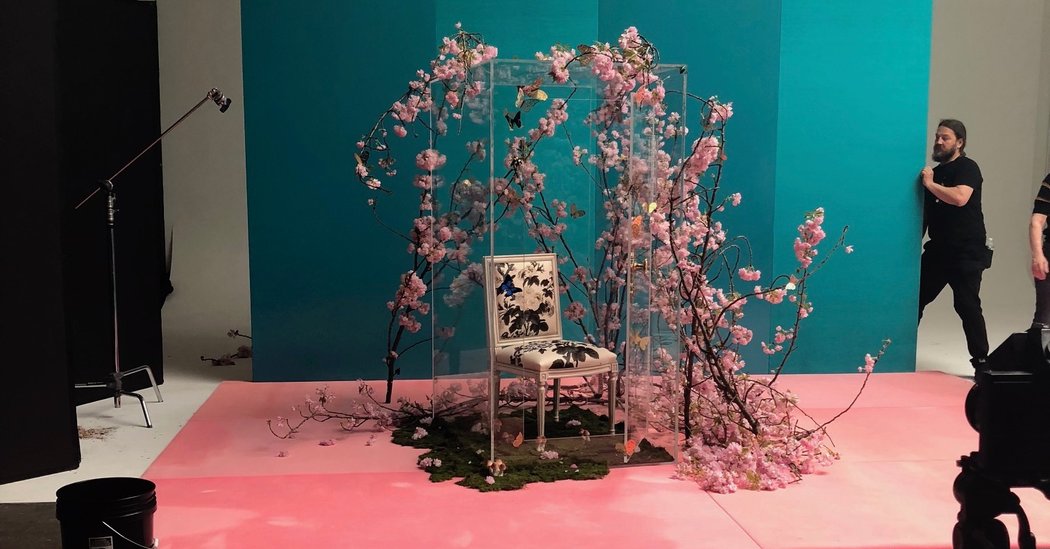
Times Insider delivers behind-the-scenes insights into how news, features and opinion come together at The New York Times.
Magazine editors often talk about “casting.” It works pretty much the way it does in movies. The editors have a role, which is the authorship of a story they’re putting into the works, and they want to figure out the best person for it. Sometimes that means someone deeply versed in the material at hand. Sometimes that means someone who’ll have the most intriguing chemistry — maybe confrontational, maybe empathetic — with the politician, performer or corporate titan at the center of the story.
In the case of a major profile of Alessandro Michele in T magazine’s annual “The Greats” issue, that meant me.
It’s casting that will surprise many readers and that scared me.
Mr. Michele is the creative director — and thus the head designer — of one of the most venerable fashion houses and luxury-goods companies in the world: Gucci. And I’m, well, not the most fashionable man on the planet.
I buy plain blue dress shirts by the half dozen, because they’re safe and I don’t have time to shop. I don’t spend much on them. I have some great Zegna ties — from 15 years ago. My jeans come from the Gap.
But from the beginning of my career in newspapers in the late 1980s, I resolved to use journalism as a passport to lands, people and milieus that I would never otherwise get to experience and that would expose me to utterly new things. I discovered I’m never more invigorated than when I’m studying unfamiliar material and trying to quickly get up to speed. I often saw most keenly what I’d never looked at before. And so I kept changing my field of vision.
Over five years at The Detroit Free Press and 23 (so far) at The Times, I have written about religion, mental illness, criminal justice, overcrowded housing, the deaths of firefighters, plane crashes, the Italian government, the Israeli government, the Turkish government, the European Union, professional football, the Miss America pageant, L.G.B.T. issues, higher education, actors, directors, writers and scores of politicians at the local, state and national levels.
For The Free Press I rode in a Bradley fighting vehicle with four U.S. Army soldiers through southern Iraq during the first Persian Gulf War, then turned around and became the newspaper’s chief movie critic. For The Times, I spent five and a half years as the chief restaurant critic, right after I’d spent a year and a half covering the Vatican. A book I wrote on child sexual abuse in the Roman Catholic Church was followed by a book about President George W. Bush, a memoir about food and an examination of the college admissions process.
But when Hanya Yanagihara, the editor in chief of T, asked me to do the profile of Mr. Michele, I realized I’d never, ever written about fashion. Which of course meant I had to.
In some ways it seemed inevitable. During my Detroit years, one of my closest friends was The Free Press’s fashion critic at the time, Robin Givhan, who would go on to win a Pulitzer Prize for her fashion coverage for The Washington Post, where she currently works. She fixed me up on dates. She and I lived for a while in the same building, just a few dozen feet apart. We watched “L.A. Law” together, alternating apartments: one week at hers, the next at mine. She refrained from commenting on my schlumpy attire.
I don’t talk to her frequently these days, so she won’t know until she sees T magazine that I’ve made a maiden journey onto her turf.
But in another example of kismet, I accidentally met Anna Wintour for the first time while I was reporting the Michele story. Ms. Wintour, the legendary empress of Vogue, was seated next to me at the Hollywood agent Bryan Lourd’s table at a Lincoln Center dinner. I mentioned Mr. Michele and we were off to the races. She was voluble, generous with her insights and a complete delight. She, too, refrained from commenting on my schlumpy attire.
As for that schlumpy attire, it was just part of what made me nervous to meet Mr. Michele, which I did for the first time at the hotel in SoHo where he stays whenever he’s in Manhattan.
He lives in Rome, so I traveled there to interview him some more and to watch him at work.
I was so worried I wouldn’t truly digest what I was observing that I kept using my iPhone to photograph it. I got carried away.
Could I take pictures of his office?
Yes.
His jewelry?
Yes.
His tattoos?
Yes.
He was patient and game, and that saved me. That and the hoariest tool of the trade: persistence. I finagled telephone time with Elton John, a friend of Mr. Michele’s. I spoke with the corporate overlords who’d decided to take a big chance on Mr. Michele. I asked fashion-savvy friends to look at Gucci slide shows with me and help me expand my vocabulary so I could faithfully communicate Mr. Michele’s vision.
And I learned.
Hanya obviously trusted that I would. That’s why she cast me.
Keep up with Times Insider stories on Twitter, via the Reader Center: @ReaderCenter.
Sign up for Mr. Bruni’s free weekly email newsletter here.
Frank Bruni has been with The Times since 1995 and held a variety of jobs — including White House reporter, Rome bureau chief and chief restaurant critic — before becoming a columnist in 2011. He is the author of three best-selling books. @FrankBruni • Facebook







